
Charles-Francois Daubigny Giclée Fine Art Prints
1817-1878
French Barbizon School Painter
Charles-François Daubigny, born in Paris in 1817, was an artist who lived at the intersection of tradition and innovation, a figure whose quiet influence would reverberate long after his time. Raised in a family of painters, Daubigny’s early years were steeped in the academic conventions of French art, but it didn’t take long for him to break free from those confines. His career began in the graphic arts, creating book illustrations and etchings that were in high demand. This background as a printmaker gave him a fine understanding of line, texture, and composition - qualities that would later emerge so strongly in his painted landscapes.
The turning point came when Daubigny discovered the village of Barbizon in 1843. The Barbizon School, nestled in the forest of Fontainebleau, was a haven for artists longing to reconnect with nature, to leave behind the formal constraints of the academy. Here, Daubigny found his calling. Nature, in all its unadorned beauty, became his muse. His palette softened, his brushstrokes became freer, and his paintings began to reflect the landscape as he saw it - not as an idealized backdrop but as a living, breathing entity. This direct approach to working outdoors, "en plein air", would later have a profound effect on the Impressionists.
In 1852, Daubigny met Camille Corot, and their shared love for nature cemented a friendship that would shape both of their careers. Together they explored the countryside, most notably the rivers Seine and Oise. Daubigny’s famous boat studio, the "Botin", became a symbol of his commitment to capturing nature in real time. It was on this boat that he painted some of his most celebrated river scenes, marked by the luminous reflections and fleeting effects of light that would so inspire younger artists like Monet.
Despite his influence, Daubigny’s career was not without frustrations. Though he served on the Paris Salon jury in 1866, and his work was widely appreciated, he often felt overshadowed by contemporaries. Yet his legacy endures in the subtlety and sensitivity of his landscapes, which emphasize not the grandeur of nature but its quiet moments. His canvases often stretch out horizontally, reflecting the sweep of the land and the softness of the light as it falls over water or forest. These qualities - the horizontality, the gentleness, the atmospheric effects - were crucial precursors to Impressionism.
Daubigny’s understated yet significant contributions to the art world continued until his death in 1878. His work bridged the gap between realism and the burgeoning movement of Impressionism. And while he may not have achieved the fame of Monet or Cézanne, his influence on them, and on the generations that followed, is undeniable. His legacy is one of quiet observation, of allowing nature to speak for itself, with no need for embellishment.
The turning point came when Daubigny discovered the village of Barbizon in 1843. The Barbizon School, nestled in the forest of Fontainebleau, was a haven for artists longing to reconnect with nature, to leave behind the formal constraints of the academy. Here, Daubigny found his calling. Nature, in all its unadorned beauty, became his muse. His palette softened, his brushstrokes became freer, and his paintings began to reflect the landscape as he saw it - not as an idealized backdrop but as a living, breathing entity. This direct approach to working outdoors, "en plein air", would later have a profound effect on the Impressionists.
In 1852, Daubigny met Camille Corot, and their shared love for nature cemented a friendship that would shape both of their careers. Together they explored the countryside, most notably the rivers Seine and Oise. Daubigny’s famous boat studio, the "Botin", became a symbol of his commitment to capturing nature in real time. It was on this boat that he painted some of his most celebrated river scenes, marked by the luminous reflections and fleeting effects of light that would so inspire younger artists like Monet.
Despite his influence, Daubigny’s career was not without frustrations. Though he served on the Paris Salon jury in 1866, and his work was widely appreciated, he often felt overshadowed by contemporaries. Yet his legacy endures in the subtlety and sensitivity of his landscapes, which emphasize not the grandeur of nature but its quiet moments. His canvases often stretch out horizontally, reflecting the sweep of the land and the softness of the light as it falls over water or forest. These qualities - the horizontality, the gentleness, the atmospheric effects - were crucial precursors to Impressionism.
Daubigny’s understated yet significant contributions to the art world continued until his death in 1878. His work bridged the gap between realism and the burgeoning movement of Impressionism. And while he may not have achieved the fame of Monet or Cézanne, his influence on them, and on the generations that followed, is undeniable. His legacy is one of quiet observation, of allowing nature to speak for itself, with no need for embellishment.
9 Charles-Francois Daubigny Artworks
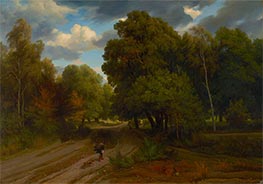
Giclée Canvas Print
$57.62
$57.62
SKU: 17615-DCF
Charles-Francois Daubigny
Original Size:89.5 x 116.2 cm
Minneapolis Institute of Arts, Minnesota, USA
Charles-Francois Daubigny
Original Size:89.5 x 116.2 cm
Minneapolis Institute of Arts, Minnesota, USA

Giclée Canvas Print
$55.97
$55.97
SKU: 17617-DCF
Charles-Francois Daubigny
Original Size:113 x 165 cm
Minneapolis Institute of Arts, Minnesota, USA
Charles-Francois Daubigny
Original Size:113 x 165 cm
Minneapolis Institute of Arts, Minnesota, USA
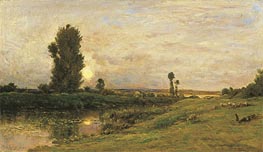
Giclée Canvas Print
$54.45
$54.45
SKU: 5677-DCF
Charles-Francois Daubigny
Original Size:38.5 x 67.2 cm
Thyssen-Bornemisza Museum, Madrid, Spain
Charles-Francois Daubigny
Original Size:38.5 x 67.2 cm
Thyssen-Bornemisza Museum, Madrid, Spain

Giclée Canvas Print
$54.45
$54.45
SKU: 17691-DCF
Charles-Francois Daubigny
Original Size:38 x 68 cm
Kimbell Art Museum, Fort Worth, USA
Charles-Francois Daubigny
Original Size:38 x 68 cm
Kimbell Art Museum, Fort Worth, USA
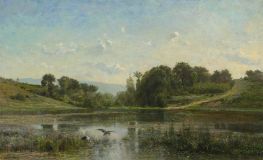
Giclée Canvas Print
$54.45
$54.45
SKU: 19747-DCF
Charles-Francois Daubigny
Original Size:62.2 x 99.7 cm
Cincinnati Art Museum, Ohio, USA
Charles-Francois Daubigny
Original Size:62.2 x 99.7 cm
Cincinnati Art Museum, Ohio, USA
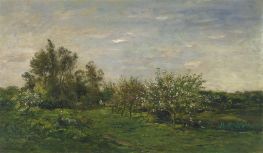
Giclée Canvas Print
$54.45
$54.45
SKU: 19746-DCF
Charles-Francois Daubigny
Original Size:35.6 x 56 cm
Cincinnati Art Museum, Ohio, USA
Charles-Francois Daubigny
Original Size:35.6 x 56 cm
Cincinnati Art Museum, Ohio, USA
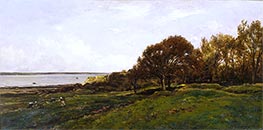
Giclée Canvas Print
$54.45
$54.45
SKU: 19007-DCF
Charles-Francois Daubigny
Original Size:106 x 216 cm
Fuji Art Museum, Tokyo, Japan
Charles-Francois Daubigny
Original Size:106 x 216 cm
Fuji Art Museum, Tokyo, Japan
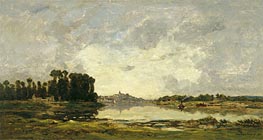
Giclée Canvas Print
$54.45
$54.45
SKU: 5678-DCF
Charles-Francois Daubigny
Original Size:35 x 64.7 cm
Thyssen-Bornemisza Museum, Madrid, Spain
Charles-Francois Daubigny
Original Size:35 x 64.7 cm
Thyssen-Bornemisza Museum, Madrid, Spain
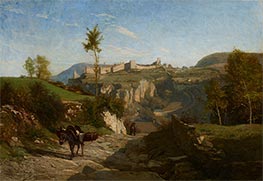
Giclée Canvas Print
$56.72
$56.72
SKU: 17616-DCF
Charles-Francois Daubigny
Original Size:62.8 x 90.8 cm
Minneapolis Institute of Arts, Minnesota, USA
Charles-Francois Daubigny
Original Size:62.8 x 90.8 cm
Minneapolis Institute of Arts, Minnesota, USA